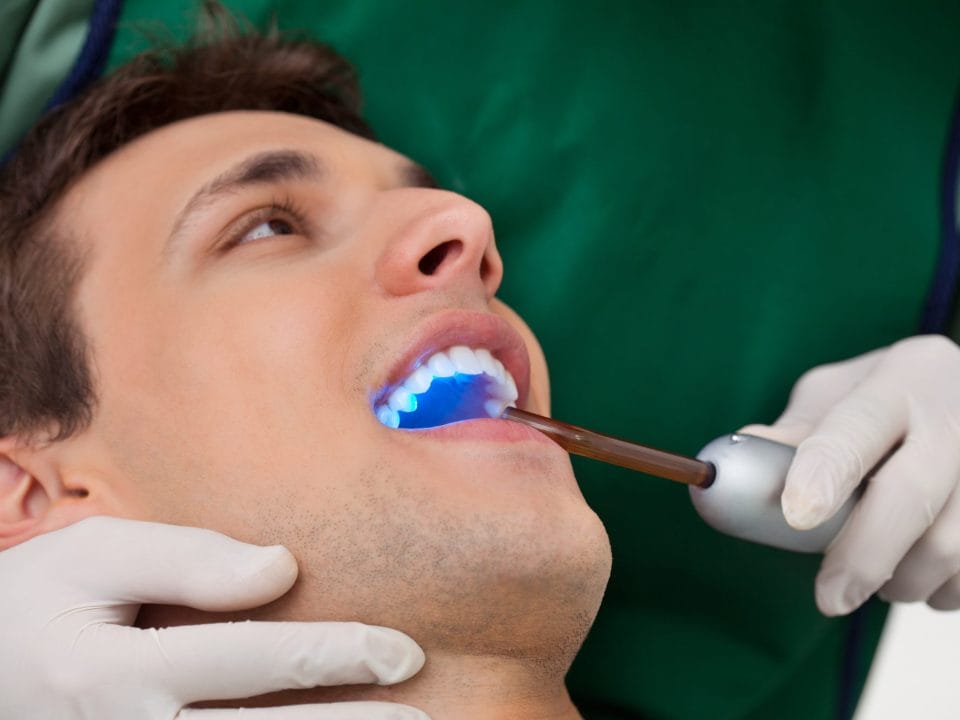
Having a dental emergency? Call us!
614-882-1135
We understand that dental emergencies can happen at any time. If you're in need of urgent care, give us a call, and we'll do everything we can to assist you when it matters most.
Patient Testimonials
Discover Better Dentistry
Become a part of the
Westerville Dental family!
We're accepting new patients. Our dental team prides itself on delivering a truly efficient and enjoyable experience while you’re with us.

Brushing and flossing are the best ways to protect your teeth from cavities, of course, but it can be difficult to clean the nooks and crannies of your teeth. This is especially true of your molars, which are those back teeth you use to chew. Left in place, leftover food in your mouth can start a chain reaction that can weaken your teeth’s enamel covering, leaving you at risk for developing tooth decay. Dentists often recommend dental sealants to protect the vulnerable surfaces of your teeth.
Dental sealants are thin plastic coatings that dentists paint onto the surface of teeth. Sealants are a protective shield that blocks out the germs and food that can lead to cavities.
About Cavities
A cavity is a permanent hole in your tooth. Left untreated, a cavity gets bigger. Cavities can also cause pain and develop infections.
When you eat, the uneven surfaces and grooves of your molars grind the food into pieces that are easy to swallow and digest. Small bits of food can hide on the surfaces of your molars and get wedged in between your teeth. Bacteria that live in your mouth can feed off these small food particles, and in the process, create acids that are strong enough to eat away at your tooth enamel. Erosion of your tooth enamel can create a cavity, also known as dental caries.
Losing tooth enamel is a big deal, in that the tough enamel protects the tissues inside your teeth. Dentin sits just beneath the enamel, for example, and provides strength and structure to your teeth. Dentin also contains microscopic tubes that lead deeper inside the tooth to the nerve. When stimulated, this nerve can transmit messages of pain and sensitivity to heat and cold. Cavities cause pain and temperature sensitivity by reducing the protective layer of enamel that serves as a buffer between the nerve and the outside world.
What’s worse is that enamel never grows back – once it has eroded or developed a cavity, it’s gone forever.
Cavities also allow bacteria to enter weakened areas, cracks, and holes in your enamel. Bacteria can accumulate near the gum-line to cause gum disease and cavities, and it can work its way down to the tip of the tooth’s root that holds the tooth securely in your jaw. Bacterial infection can cause an abscess, or pocket of infection, in your gums or in the root of a tooth. Left untreated, the bacteria in a tooth abscess can travel through your bloodstream to other parts of your body. You can also lose your tooth.
Clearly, preventing cavities is important and dental sealants are a great way to protect teeth from cavities.
How Dental Sealants Work
Dental sealants create a protective covering over your teeth. This covering keeps bits of food out from the uneven surfaces, nooks and crannies of your teeth; dental sealants also prevent bacteria and acid from settling on the surface of your teeth.
Who Can Get Sealants?
While both children and adults can get dental sealants, it is better to get sealants early, while you are young. First molars typically start appearing at about the age of 6 years, and second molars usually break through at about the age of 12 years. Sealing these teeth as soon as the teeth appear can keep your child free from cavities at an early age, and continue to provide protection for years.
While dental sealants are usually for permanent teeth, dentists recommend dental sealants to protect baby teeth in some cases. Because “baby teeth” play such an important role in holding the correct spacing for permanent teeth and in a child’s overall health, young children who have deep depressions and grooves may benefit from dental sealants.
How Do Dentists Apply Dental Sealants?
Your dentist will start by cleaning and drying your teeth. Next, your dental professional will apply an acidic gel, which roughs up the surface of your teeth to create a strong bond between your enamel and the sealant. After giving the acid a few seconds to work, your dentist will rinse off and dry your teeth. Your dentist will then paint the dental sealant into the grooves of your teeth. In the final step, your dentist will shine a special blue light onto the treated teeth to harden the sealant.
In some cases, your dentist can apply the dental sealant over areas of early decay to prevent existing cavities from damaging your teeth even further. Clear sealants can help your dentist keep an eye on small cavities to make sure they don’t get worse.
Getting dental sealants is easy and does not hurt. Sealants are very thin and fill the grooves and pits of teeth; some patients can feel the sealant with their tongue for a short time after getting dental sealants. Dental sealants last for many years; if they do fall off, they are easy to replace.
Sealants can be used alongside other measures to prevent cavities. Fluoride also prevents cavities, for example, but in a different way than sealants. Fluoride prevents cavities by strengthening enamel, while sealants create a protective coating.
For more information about dental sealants, consult with your dentist at Westerville Dental Associates. Our team of dental professionals have used dental sealants extensively to protect the teeth of their patients. Call us today!


 Meet Dr. Zody
Meet Dr. Zody Meet Dr. Choi
Meet Dr. Choi Meet Dr. Son
Meet Dr. Son



